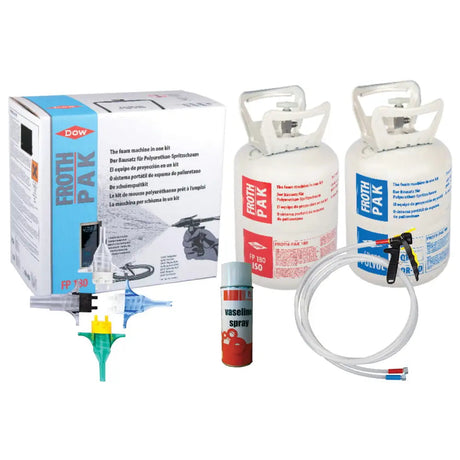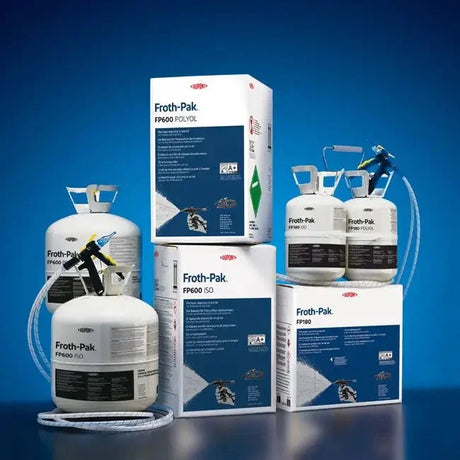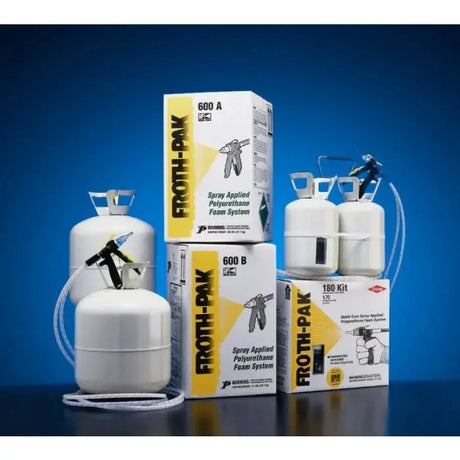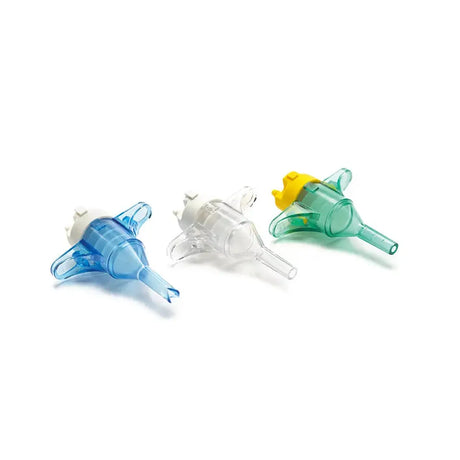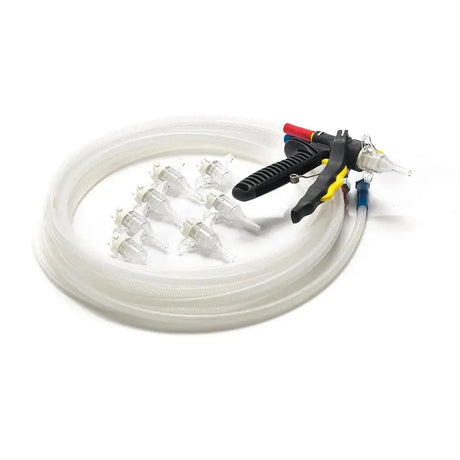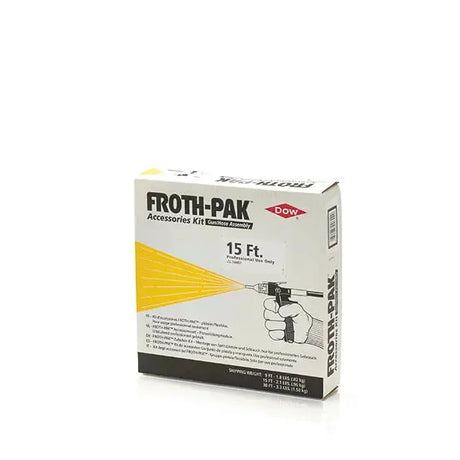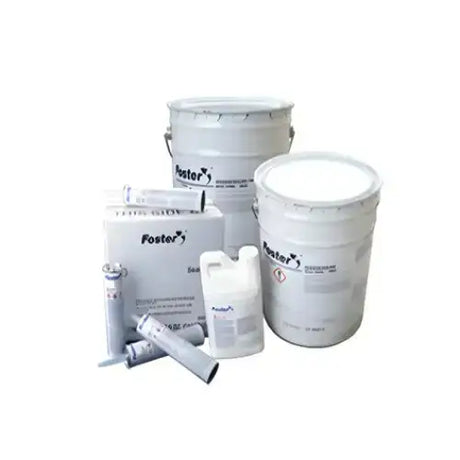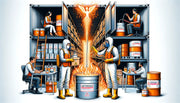Insulation R-values are a crucial factor in building construction and energy efficiency. R-values measure the thermal resistance of materials, determining how effectively they can resist heat flow. Choosing the right insulation with an appropriate R-value is like selecting the perfect winter coat for your home – it keeps the warmth in and the cold out. This article explores the science behind R-values, the various insulation materials and their corresponding R-values, and how to select the best insulation for your needs. We will explore the complexities of thermal resistance, conductivity, and the importance of thickness and density in insulation performance.
Key Takeaways
- R-value is a measure of insulation's ability to resist heat flow; the higher the R-value, the better the insulation.
- Factors such as material type, thickness, and density can significantly influence a material's R-value.
- Comparing R-values to U-values is essential for understanding the overall energy efficiency of building elements.
- The optimal R-value for insulation varies depending on the specific part of the building, such as the roof or walls.
- Choosing the right insulation involves assessing R-values, material properties, and installation best practices.
Understanding Insulation R-Values

Defining R-Value and Its Importance
The R-value is a metric that quantifies the thermal resistance of insulation materials. It is a crucial factor in determining how effectively a material can prevent heat from passing through it. The higher the R-value, the greater the insulation's effectiveness in retaining heat within a space, leading to enhanced energy efficiency and occupant comfort.
R-value measures insulation's resistance to heat flow. It is influenced by various factors such as the material's composition, its thickness, density, and even external conditions like temperature and moisture levels. A higher R-value signifies a material's superior thermal performance, which is essential for achieving energy efficiency and maintaining a comfortable living environment.
The importance of R-value extends beyond mere numbers; it represents the key to selecting the right insulation for your needs, ensuring that your living or working space is both energy-efficient and comfortable.
Factors Influencing R-Value
The effectiveness of insulation is quantified by its R-value, but this figure is not static and can be influenced by a variety of factors. Moisture is a notorious adversary of insulation, as it can significantly reduce the R-value by compromising the material's structure and thermal resistance. Similarly, the age of the insulation can lead to settling or compaction, which diminishes its effectiveness over time.
Installation quality is paramount; improper installation can create gaps or compression, leading to a lower R-value than expected. External conditions such as temperature and wind can also play a role, potentially altering the performance of the insulation material. It's essential to consider these factors to ensure that the insulation performs to its full potential.
Double insulation involves using two layers of insulation to improve energy efficiency by creating an extra barrier against heat transfer and noise reduction.
Understanding these variables can help in selecting the right insulation for a specific application and in maintaining its intended R-value throughout the lifespan of the building.
Interpreting R-Value in Real-World Applications
The higher the R-value, the greater the insulation's effectiveness in resisting heat flow, which translates to increased energy efficiency and comfort for occupants. For instance, a material with an R-value of 5 per inch, such as certain types of foam insulation, will provide better thermal resistance than a material with an R-value of 2 per inch, like some fiberglass products.
Installation is a critical factor in ensuring that the R-value is fully realized in practice. Proper installation can prevent gaps and thermal bridging, which can significantly undermine the insulation's performance. Expert advice on insulation installation is crucial for achieving the intended R-value and ensuring a well-insulated and safe home.
It is important to remember that the R-value is only one aspect of a material's insulating properties. Factors such as air sealing, moisture resistance, and fire safety also play a vital role in the overall performance of insulation.
To illustrate the real-world application of R-values, consider the following table showing typical R-values for some common insulation materials:
| Insulation Material | Thickness (mm) | Thickness (inches) | R-Value |
|---|---|---|---|
| Earthwool | 200 | (7 7/8) | 4.0 |
| Earthwool | 100 | (3 15/16) | 2.0 |
| Polyurethane foam | 25 | (31/32) | 1.1 |
| Rockwool | 200 | (7 7/8) | 4.5 |
| Rockwool | 100 | (3 15/16) | 2.7 |
| Polyester | 200 | (7 7/8) | 3.5 |
| Polyester | 90 | (3 17/32) | 1.5 |
| Polystyrene | 25 | (31/32) | 0.88 |
| Fiberglass | 19.05 | (3/4) | 3.00 |
| Fiberglass | 25.4 | (1) | 4.00 |
| Fiberglass | 38.1 | (1 1/2) | 6.00 |
| Extruded Polystyrene | 19.05 | (3/4) | 3.75 |
| Extruded Polystyrene | 25.4 | (1) | 5.00 |
| Extruded Polystyrene | 38.1 | (1 1/2) | 7.50 |
| Foil-faced Polyisocyanurate | 19.05 | (3/4) | 5.40 |
| Foil-faced Polyisocyanurate | 25.4 | (1) | 7.20 |
| Foil-faced Polyisocyanurate | 38.1 | (1 1/2) | 10.80 |
For more see here.
The Science Behind R-Values
Thermal Resistance and Heat Flow
Understanding the relationship between thermal resistance and heat flow is crucial for evaluating insulation performance. The higher the R-value, the greater the insulation's ability to resist heat flow. This resistance is what keeps our homes warm in the winter and cool in the summer.
Thermal conductivity is a measure of how easily heat passes through a material. Materials with low thermal conductivity are excellent for insulation as they hinder the heat flow, enhancing the thermal resistance. For instance, a material with a thermal conductivity of 0.022 W/m.K and a thickness of 100mm would yield an R-value of 4.5, indicating strong insulating properties.
In practical terms, when considering insulation for ductwork or piping, it's essential to understand how heat loss can be mitigated. Insulation with a high R-value will slow down the heat loss, which is particularly important in systems where maintaining temperature is critical, such as in heat tracing applications. Here, insulation works in tandem with heat trace cables to replace the heat lost from the surface, ensuring temperature maintenance or freeze prevention.
The effectiveness of insulation is not solely dependent on R-value; factors such as material thickness, density, and even the presence of moisture can influence performance. It's also important to consider the safety of exposed mineral wool and the water resistance of mineral wool when selecting insulation materials.
Thermal Conductivity and Its Role
Thermal conductivity, often denoted by the symbol lambda ((\lambda)), is a fundamental property that measures how well heat flows through a material. The lower the thermal conductivity, the more effective the material is at insulating. This is because materials with low thermal conductivity resist and slow down the transfer of heat, enhancing their insulating power.
The relationship between thermal conductivity and insulation effectiveness is inverse; as one decreases, the other increases, leading to improved energy efficiency in buildings.
In the context of fire safety, materials with low thermal conductivity contribute to fire resistance. Fire-resistant coverings with crucial thermal properties protect lives and assets by impeding fire spread. Insulation with low thermal conductivity acts as a protective barrier, which is essential in building construction for ensuring safety and compliance with fire standards.
Here is a simple calculation to determine the R-value from thermal conductivity: For a material with a thickness of 100mm and a thermal conductivity of 0.022 W/m.K, the R-value would be calculated as the thickness divided by the thermal conductivity, resulting in an R-value of 4.5.
Comparing R-Values and U-Values
When selecting insulation materials, understanding the difference between R-values and U-values is crucial. The R-value measures the resistance to heat flow, with higher values indicating better insulation. In contrast, the U-value quantifies the rate of heat transfer through a material; the lower the U-value, the more effective the insulation.
To make informed decisions, it's essential to consider both metrics. A comprehensive approach involves looking at the R-value for the material's insulating properties and the U-value for its overall heat transfer efficiency. This dual assessment ensures optimal thermal performance for a building element.
Remember, while R-values are additive for composite structures, U-values require a calculation that considers the combined effect of all materials involved.
For practical application, always consult manufacturer's data for accurate temperature ranges and explore duct insulation types and safety considerations for mineral wool insulation.
Materials and Their R-Values
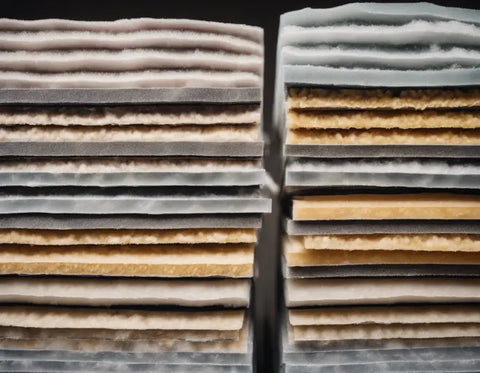
Insulation Types and R-Value Rankings
When selecting insulation, the R-value is a critical factor to consider as it measures the material's resistance to heat flow. The higher the R-value, the greater the insulation's effectiveness. Different types of insulation materials come with varying R-values, which can significantly impact a building's thermal efficiency.
For instance, phenolic foam insulation from manufacturers like Unilin and Kingspan typically offers some of the highest R-values per inch of thickness. Similarly, PIR (polyisocyanurate) rigid boards from Celotex and Recticel are also known for their high R-value ratings. On the other hand, materials like EPS (expanded polystyrene) and mineral wool may require greater thickness to achieve comparable R-values.
It's essential to match the insulation's R-value with the specific needs of your location and building to ensure optimal thermal performance.
Here's a quick glance at how some common insulation materials stack up in terms of R-value per unit of thickness:
| Insulation Type | Thickness (mm) | R-Value |
|---|---|---|
| Phenolic Board | 120 | High |
| PIR Rigid Board | 140 | High |
| EPS | 190 | Moderate |
| Mineral Wool | 300 (combined) | Moderate |
Density and material thickness are key factors that influence the R-value of insulation. By understanding these rankings and the properties of each material, homeowners and builders can make informed decisions to enhance energy efficiency and comfort.
Impact of Material Thickness on R-Value
The relationship between the thickness of insulation materials and their R-values is direct and significant. Doubling the thickness of insulation typically means doubling the R-value, which translates to enhanced thermal resistance. For instance, a 100mm thick PIR insulation with a lambda value of 0.022 W/m.K will have an R-value of 4.5. If the thickness increases to 200mm, the R-value also increases, potentially reaching 9.0.
Thickness is not the only factor to consider; the type of material also plays a crucial role. Different materials have varying thermal properties, and thus, their R-values per inch will differ. Here's a quick comparison of common insulation materials and their corresponding good R-values based on thickness:
- Phenolic board: 1x120mm
- PIR rigid board: 1x140mm
- EPS: 1x190mm
- Mineral wool: 1x200mm + 1x100mm
The optimal thickness of insulation is not a one-size-fits-all solution. It varies based on several factors, including climate, the specific type of insulation, and the part of the building being insulated. For example, the optimal thickness of spray foam insulation in the attic for maximum energy efficiency varies based on climate and type of foam. In the UK, an R-value of 38-49 is recommended for homes. Always consider building codes and consult professionals to determine the ideal solution for your situation.
Density and Its Effect on Insulating Performance
The density of insulation material is a critical factor in determining its R-value and overall insulating performance. Higher density materials generally have higher R-values, meaning they provide better thermal resistance. However, this is not a linear relationship; at a certain point, increasing density may yield diminishing returns in terms of R-value improvement.
Reflective insulation and radiant barriers are types of insulation that block heat transfer. Reflective insulation has multiple layers for better insulation, while radiant barriers focus on reflecting radiant heat. They can be used together for improved energy efficiency.
When considering insulation for a building project, it's essential to balance the density of the material with other factors such as cost, ease of installation, and the specific thermal requirements of the space.
It's important to note that the R-value is just one aspect of a material's performance. Other characteristics, such as moisture resistance and fire ratings, also play a significant role in the selection process.
R-Values in Building Construction

R-Value Requirements for Energy Efficiency
In the realm of building construction, the R-value is a critical metric for ensuring energy efficiency. Meeting the required R-values is essential for compliance with building regulations and for achieving a high level of thermal efficiency. These values are determined by the thermal resistance of the insulation materials used, which in turn influences the overall energy consumption of a building.
To meet the minimum R-value for walls, for example, a value of 3.30m^2K/W is often cited as the standard. Achieving this may necessitate the addition of an extra layer of insulation, typically around 25mm in thickness.
For roofs, where heat loss is most significant, the standards are even more stringent. A robust R-value above 4.54m^2K/W is recommended, aligning with a U-value of 0.16 W/m^2K. These figures underscore the importance of selecting the right insulation materials and ensuring proper installation to maintain a comfortable and energy-efficient living environment.
Optimizing Insulation for Different Building Elements
When optimizing insulation for various building elements, it's essential to consider the unique requirements of each component. The R-value of individual components, such as walls, roofs, and floors, plays a pivotal role in determining the overall thermal efficiency of a structure. For instance, higher R-values are typically necessary for attic spaces to prevent heat loss in winter and gain in summer.
Insulation selection based on moisture resistance, fire safety, and ease of installation is crucial for efficiency and energy savings. Various materials cater to specific needs for different systems, such as PIR/PU insulation for walls or mineral wool for fire protection. Here are some considerations for optimizing insulation:
- Assess the moisture exposure of each element to choose appropriate water-resistant materials.
- Evaluate fire safety requirements to select materials with suitable fire ratings.
- Consider ease of installation, especially for retrofitting insulation in existing buildings.
By carefully selecting insulation that meets the specific demands of each building element, constructors can ensure a balance between cost, performance, and longevity.
Remember that the overall U-value of a building element is also influenced by the R-values of its components. Accurate trimming and close-butting joints are necessary to minimize thermal bridging and maximize the effectiveness of the insulation.
Fire Ratings and Safety Considerations
When selecting insulation materials, it is crucial to consider not only the R-value but also the fire performance characteristics. All insulation products must comply with stringent fire safety standards to ensure they do not contribute to the spread of fire within a building. These standards are often outlined in documents such as the British Standard BS EN 13501-1, which includes tests for combustibility, smoke propagation, and the emission of droplets and particles.
Insulation standards cover a wide range of performance aspects, including thermal conductivity, temperature range, water absorption, fire performance, and strength. Specific requirements may dictate the thickness of the material, installation procedures, and necessary testing to verify compliance with health and safety measures.
Choosing the Right Insulation

Assessing Insulation Needs Based on R-Value
When considering the importance of upgrading home insulation, it's essential to assess the specific needs of your property. Signs that may indicate the need for better insulation include uneven temperatures across rooms and high energy bills. To address these issues, selecting the right insulation with an appropriate R-value is crucial.
The R-value is a measure of thermal resistance and the higher the R-value, the better the material is at insulating. For example, a PIR insulation product that is 100mm thick with a thermal conductivity (lambda value) of 0.022 W/m.K would have an R-value of 4.5. This indicates a strong resistance to heat flow, translating to improved energy efficiency and comfort within the home.
To ensure optimal insulation performance, it is important to consider the R-value in relation to the specific application and climate conditions. The right R-value can make a significant difference in maintaining a comfortable indoor environment and reducing energy costs.
Here is a simplified R-value chart for common insulation materials:
| Material | Thickness (mm) | R-Value |
|---|---|---|
| PIR | 100 | 4.5 |
| Rockwool | 100 | 3.3 |
This chart serves as a starting point for homeowners to compare different insulation options. However, it's important to consult with a professional to determine the most suitable insulation for your home's specific needs.
Comparative Analysis of Insulation Products
When selecting insulation for your home or project, it's crucial to compare products based on their R-values and other performance characteristics. High-quality insulation can lead to significant energy savings and enhance indoor comfort. Here's a brief comparison of common insulation materials:
| Material | R-Value per Inch | Fire Rating | Notes |
|---|---|---|---|
| Fiberglass | 2.2 - 4.3 | A | Widely used, affordable |
| Cellulose | 3.1 - 3.8 | B | Eco-friendly, recycled content |
| Polyurethane Foam | 5.6 - 8.0 | B | High R-value, more expensive |
| Polystyrene | 3.8 - 5.0 | B | Rigid, good for below grade |
Consider the specific needs of your project, such as the required fire ratings and the environmental impact of the materials. Some products may offer additional benefits like soundproofing or moisture resistance.
To ensure optimal performance, it's essential to install insulation correctly. Whether you choose suitable insulation, install it yourself or hire a professional, the goal is to achieve the best possible thermal barrier for your space. Other products like cladding and valve jackets can further enhance insulation effectiveness.
Remember, investing in high-quality insulation not only reduces your energy bills but also improves the overall comfort of your living or working environment.
Installation Considerations and Best Practices
Proper installation of insulation is crucial for maximizing its effectiveness and ensuring safety. Before beginning the installation process, assess the environmental conditions, such as humidity levels and potential corrosive atmospheres, which could impact the choice of insulation material and installation method.
- Plan the installation carefully, considering any obstructions and the layout of the system to optimize performance.
- Choose the right insulation material, taking into account the space available, budget constraints, and access requirements for maintenance.
- Ensure that all connections are secure and that the system meets the necessary voltage and power output requirements.
Safety precautions for installing lagging insulation include following manufacturer's guidelines, wearing PPE, and ensuring ventilation. Inspect existing insulation for wear and replace if necessary for thermal performance.
Adhering to these best practices will help to avoid issues during operation and extend the lifespan of the insulation system.
Conclusion
R-values are a critical measure of how effective insulation is at resisting heat flow. Throughout this article, we've aimed to demystify the concept of R-values, providing technical explanations as well as relatable analogies to ensure a comprehensive understanding. Whether you're insulating a new building or upgrading an existing one, recognizing the importance of R-values is essential.
A higher R-value translates to better insulation performance, which ultimately leads to an more energy-efficient and comfortable living environment. By considering the R-value alongside other factors like material thickness, density, and thermal conductivity, you can make informed decisions about insulation that will pay dividends in terms of sustainability and cost-effectiveness.
Insulation is a bit like a warm sweater for your home – the higher the R-value, the better it is at keeping the warmth in and the cold out. So, when selecting insulation, don't overlook this crucial metric. A well-insulated home is a comfortable and cost-effective home.
Frequently Asked Questions
What exactly is an R-value in insulation?
R-value is a measure of thermal resistance used to rate an insulation material's effectiveness. It indicates how well the material can resist heat flow; the higher the R-value, the better the insulation's performance.
How does R-value affect energy efficiency in buildings?
Higher R-values in insulation mean better resistance to heat transfer, which can result in reduced energy costs for heating and cooling, and improved overall energy efficiency in buildings.
Can the thickness of insulation affect its R-value?
Yes, the thickness of insulation is directly proportional to its R-value. The thicker the insulation, the higher the R-value and the better its insulating power.
What is the difference between R-value and U-value?
R-value measures the resistance to heat flow within an insulating material, while U-value measures the overall heat transfer rate through a building element, including its walls, roof, and windows. A lower U-value indicates better insulation.
How do I choose the right R-value for my home?
The appropriate R-value for your home depends on your climate, the part of the house you're insulating, and the energy efficiency you desire. It's best to consult with a professional to determine the R-value that suits your specific needs.
Are there any safety considerations with high R-value insulation materials?
Yes, some high R-value insulation materials may have specific fire safety ratings that need to be considered. Always check the fire ratings and safety considerations of insulation materials before installation.


